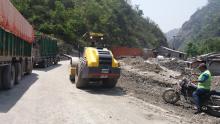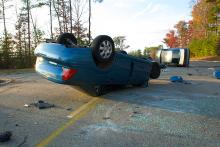A report from the World Bank shows that low- and middle-income countries could be up to 22% wealthier if road deaths were halved in their countries. The report, The High Toll of Traffic Injuries, was released in December 2017. It studied the effect of road traffic crashes in five countries that are part of the Bloomberg Initiative for Global Road Safety Programme 2015–2019: China, India, the Philippines, Tanzania, and Thailand. According to the report, if these countries achieved Sustainable Development Goal (SDG) 3.6, to halve the number of road deaths, they would increase their gross domestic product (GDP) per capita by 7–22% over 24 years.
The report shows that China would see a gain of 15%, while India would see an improvement of 14% and the Philippines would see a benefit of 7.2%. Meanwhile Tanzania would see a gain of 7.1% and Thailand would see a massive gain of 22.2%. The highest gains were calculated for Thailand because it has the highest road death rate of the five countries. In the Philippines, where the existing road death rate is lower, the anticipated increase is 7.2%.
The report reflects that road traffic crashes have a disproportionate effect on GDP because they are the leading cause of death and injury among 15–29 year olds, who make up a large proportion of the working-age population. It also considers that productivity is not limited to the victims of crashes but also to the mental and physical health of their families and friends.
While road traffic crashes are not the leading cause of death in these countries, the report points out that they are preventable. Reducing road deaths is readily achievable by addressing risk areas such as speeding, drunk driving, visibility of pedestrians, separation of road users and helmet use. Cost effective interventions that work can be relatively cheap to implement.
The report recognises that an assessment of GDP is a narrow measure and does not take account of the value of a healthy life. It also estimates the increase in welfare that reducing road traffic death and injuries is worth to a country’s citizens.
The cost of crashes impacts on GDP
A report from the World Bank shows that low- and middle-income countries could be up to 22% wealthier if road deaths were halved in their countries. The report, The High Toll of Traffic Injuries, was released in December 2017. It studied the effect of road traffic crashes in five countries that are part of the Bloomberg Initiative for Global Road Safety Programme 2015–2019: China, India, the Philippines, Tanzania, and Thailand. According to the report, if these countries achieved Sustainable Development







